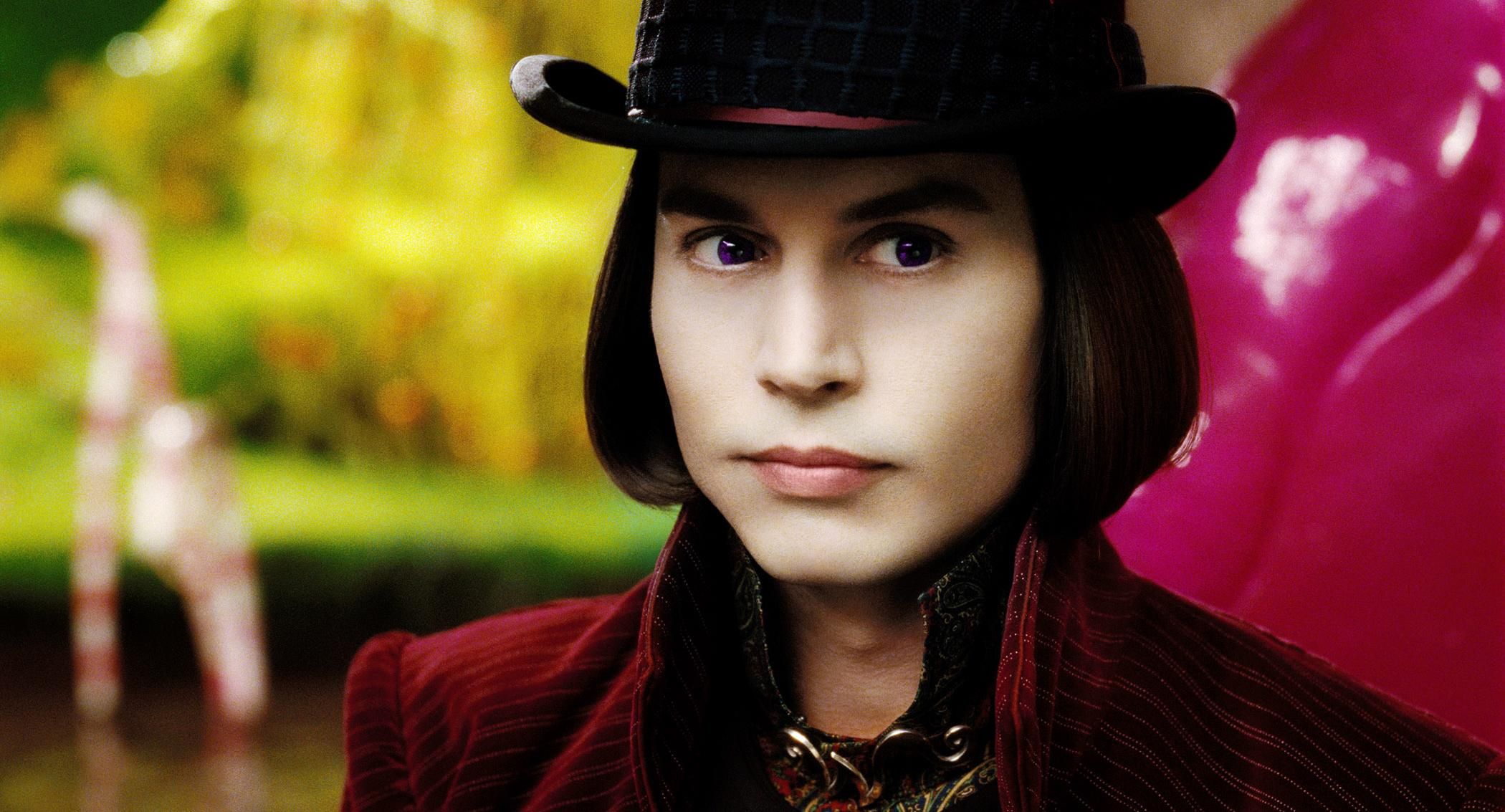
Every once in a while you get a performance from an actor that is so selfless and honed to perfection that they make everyone else around them better as a result. It’s not an easy task. Acting is reacting, as they say, and the best performances are the ones that play off of each other and challenge one another to take it up to the next level.
On the other side of the equation, every now and then an actor will give a performance that is so baffling, so out of place, or so incredulously and absurdly terrible that the entire film suffers as a result. Sometimes these results are amusing, other times alarming, and occasionally downright despicable.
Whatever the reason for the disaster, they are on film – black and white or glorious Technicolor – for all time, and for all the moviegoing world to watch, appalled, as they sink into their seats and cover their eyes and wonder when this horror is going to come to an end. Disasters very much like the list below.
1. John Wayne, The Conqueror (Dick Powell, 1956)
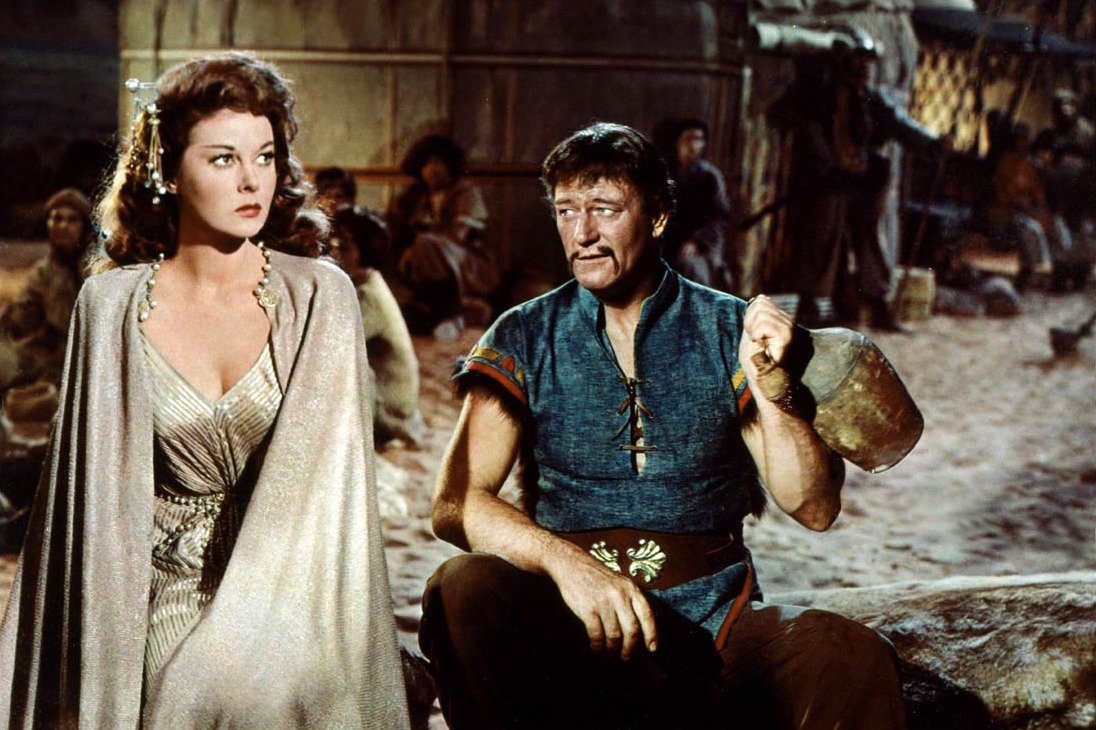
When Nikita Khrushchev visited America in 1959, he made two requests: to go to Disneyland and meet John Wayne. The man born Marion Morrison in 1907 was an indisputable icon even during his life, a living symbol of America’s frontier-conquering past and the exploration of the West so undeniable even foreign leaders were in awe of him.
Throughout his career, Wayne made a name for himself playing cowboys, lone wolfs, and rugged individualists, and few would argue that he helped defined the American Western during the middle third of the 20th century. However, even icons make mistakes, and arguably the biggest offense Wayne ever committed onscreen was his portrayal of the legendary Mongolian warlord Genghis Khan in Dick Powell’s 1956 epic The Conqueror.
Even by the standards of American cinema in the 1950s, few would argue that Wayne was grossly miscast as the Great Khan, and despite Wayne’s star power (only Clark Gable sold more tickets than Wayne during this time) the film was a box office flop and was labeled one of the worst films of all time.
Adding to the film’s disastrous legacy was the fact that it was shot downwind of a nuclear testing facility: 91 cast and crew members were diagnosed with cancer, including the Duke himself, who died in 1976.
2. Mickey Rooney, Breakfast at Tiffanys (Blake Edwards, 1961)
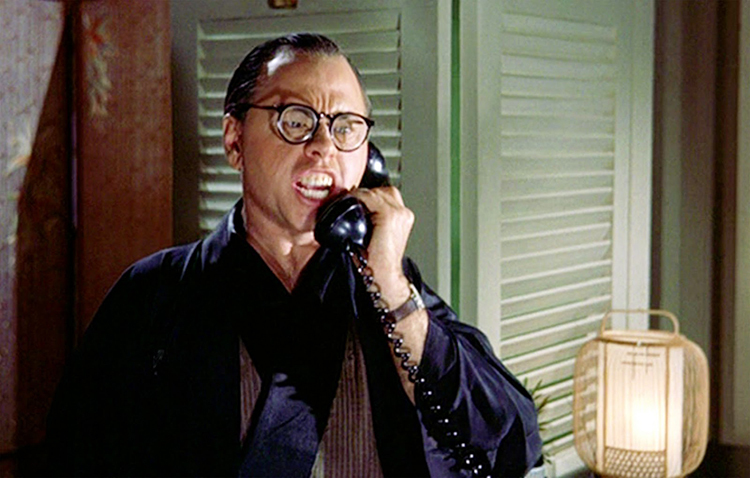
More than 50 years after it was first released, Breakfast at Tiffany’s is widely regarded as one of the classic American films of the early 1960s. Based on Truman Capote’s novella, it tells the story of New York socialite Holly Golightly (played by screen legend Audrey Hepburn) who harbors a secret past. Widely praised for Hepburn’s performance, its witty screenplay and Henry Mancini’s “Moon River,” the film was a box office success.
However, its reputation in modern cinema circles is somewhat diminished by its horrifically racist attitudes, particularly in Mickey Rooney’s appalling portrayal of Mr. Yunioshi, Golighty’s Japanese landlord. In short, Rooney’s portrayal of a man of Asian descent – complete with yellow face and buck teeth – is one of the most outrageously offensive performances to premiere on screen since Griffith’s The Birth of a Nation.
Even at the time, it was a controversial choice: producer Richard Shepherd repeatedly asserted that he felt uncomfortable by the performance, but director Blake Edwards insisted on keeping Rooney in the film. Years later, both Edwards and Rooney apologized, with Edwards saying “Looking back, I wish I had never done it… and I would give anything to be able to recast it, but it’s there.” Indeed it is, a black mark of a performance, locked in celluloid for all the world to see.
3. Sofia Coppola, The Godfather Part III (Francis Ford Coppola, 1990)
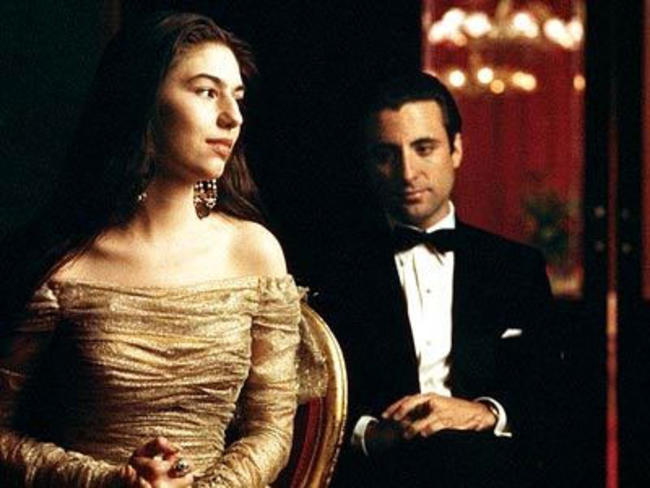
No one in their right mind would argue that the first two films in the Godfather series are among the greatest films of all time. Everything about them – from Coppola’s direction to the music to the career-best performances of the entire cast – exudes cinematic perfection.
Sadly, the third entry in the trilogy is undeniably the worst of the lot. While there are many factors at play, such as Robert Duvall refusing to reprise his role as Tom Hagen and Paramount giving Coppola a mere 6 weeks to deliver the screenplay, most of the criticism seems to be directed at the director’s decision to cast his own daughter, Sofia, in the role of Michael Corleone’s daughter Mary.
To be fair, she wasn’t his first choice: Winona Ryder was originally cast before dropping out due to exhaustion. Coppola, feeling the heat from the studio and desperate to not fall too far behind on production, cast his daughter and finished the film. Perhaps he should have cut a deal with the studio.
While Ms. Coppola has gone on to become a celebrated director in her own right, she was not a natural actor and her performance in the film clearly demonstrates that. In any film she would look out of place, but alongside heavy hitters like Al Pacino, her tone-deaf delivery and complete lack of screen presence became even more pronounced.
4. Kevin Costner, Robin Hood: Prince of Thieves (Kevin Reynolds, 1991)
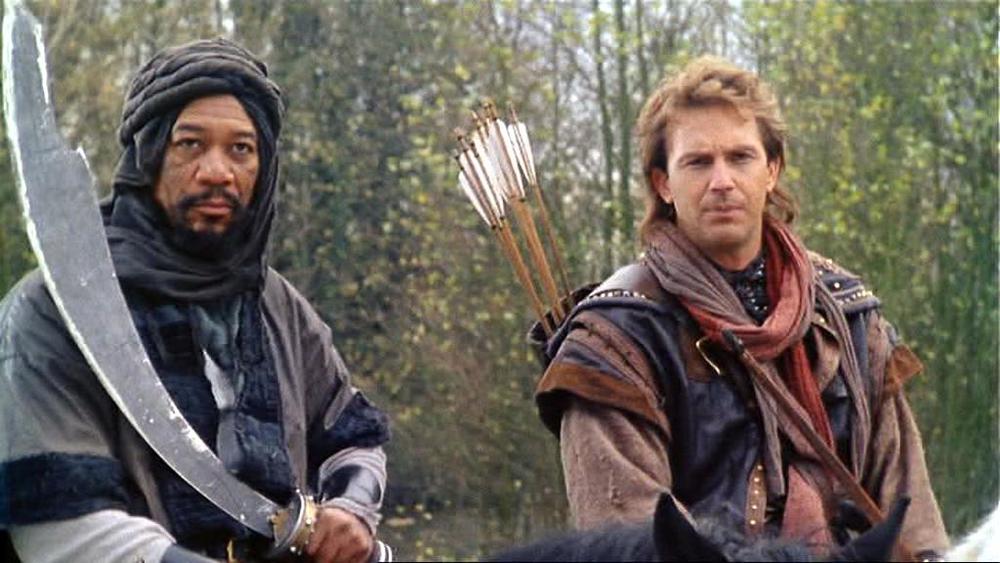
We may never know exactly why Kevin Costner thought playing Robin Hood would be a good idea. In 1991, riding high after a Best Director win for Dances with Wolves, Costner teamed up with Kevin Reynolds to bring yet another adaptation of the classic English folk tale to life.
Opting for a more historical approach rather than a traditional one, the film begins with Robin in prison in Jerusalem during the Crusades before returning to England to form his merry band of thieves rebelling against the corrupt Sheriff of Nottingham (Prince John is nowhere to be found). Despite the filmmakers’ attempts, however, every historian in the world can agree that Robin Hood would have spoken with something resembling an English accent.
Costner, for whatever reason, decided to perform the legendary English outlaw with his every day American accent. The result, far from historically accurate, is baffling and laughable at best, and nightmarishly amateurish at worst. For a man who is not untalented, it remains unclear exactly why Costner thought this approach would be a wise one.
If nothing else, we at least have Alan Rickman’s performance as the Sheriff to numb the pain: after initially turning down the role, he agreed to do it after he was given free reign to improvise and “improve” the script as he saw fit. For a disappointing film, Rickman at least had the intelligence to realize how ridiculous it was and have fun with it.
5. Keanu Reeves, Bram Stoker’s Dracula (Francis Ford Coppola, 1992)

From F. W. Murnau and Tod Browning to Werner Herzog and Mel Brooks, countless directors have brought their vision of Bram Stoker’s Dracula to life on the silver screen. One of the greatest and most entertaining of these adaptations was Francis Ford Coppola’s 1992 adaptation, starring the great Gary Oldman as the iconic vampire and featuring a diverse and talented cast that included Anthony Hopkins, Winona Ryder and Tom Waits.
Though the film was a box office success and took home 3 Oscars for its artistic and technical merits, the point most critics took the most umbrage with was the casting of Keanu Reeves as Jonathan Harker. While Reeves has carved out a niche for himself as an action star with films such as The Matrix and John Wick, in 1992 he was still struggling to escape the lovable goofball persona he had cultivated during his time in the Bill and Ted movies.
Sporting a British accent of dubious origins and showing all the screen presence of a wooden plank in a suit, Reeves stumbled in his attempts to be taken seriously as an actor. Though the film holds up very well more than a quarter century later, most would argue that Reeves is the factor that keeps it from being great as opposed to merely very good.
6. Andie MacDowell, Groundhog Day (Harold Ramis, 1993)
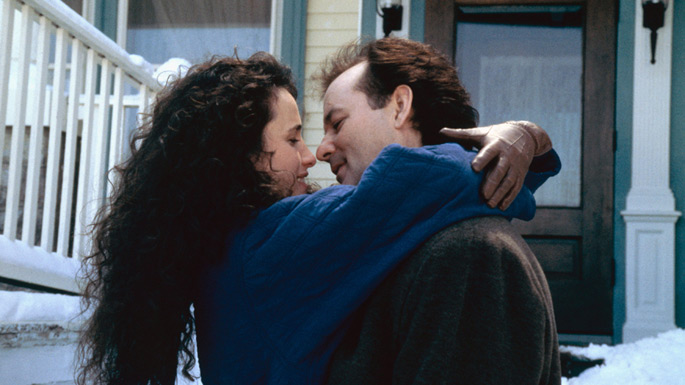
Groundhog Day is a film that, like its protagonist, only becomes better over time. A quarter century after it was first released, Harold Ramis’s romantic comedy is widely recognized as a classic, both for its innovative narrative structure and a career-best performance by Bill Murray.
As Phil Conners, a cantankerous weatherman trapped in a time loop in his least favorite place in the world, Murray brings a pathos and poignancy to his portrayal of what could have been a very unlikeable and unsympathetic character, and the result is a masterclass in subtlety and nuance (and of course humor).
However, the one misstep in the film was the casting of Andie MacDowell as Rita, his producer and object of his affection. While Murray’s character was designed to begin as a jerk and gradually become a better person over time, MacDowell had a much more challenging task: not only does her character lack the change and development that Murray’s does, but she had to display that magical, effervescent quality that makes his character fall for her in the first place. Sadly, Macdowell comes off as bland throughout the film, reciting her lines with all the charm and allure of a narrator for a battery commercial.
7. Robert de Niro, Mary Shelley’s Frankenstein (Kenneth Branagh, 1994)

Like Dracula, Mary Shelley’s Frankenstein is another classic horror novel that has been adapted countless times for cinema. Some of these adaptations, such as James Whale’s 1931 version, have been hailed as classics, while others – Alvin and the Chipmunks meet Frankenstein, for example – have not.
But perhaps the most disappointing of all adaptations of Shelley’s novel was Kenneth Branagh’s 1994 version, starring no less than Robert de Niro as the tortured monster. de Niro, of course, was a legend by this point in his career, having worked with a variety of directors from Martin Scorsese to Francis Ford Coppola and won two Oscars.
For whatever reason, however, none of that talent is apparent in his portrayal of Frankenstein’s Monster. For whatever reason, the actor decided the best way to approach the character is to speak with a New York accent while everyone else was flouncing about speaking like people out of a Charles Dickens book.
Add to this a scene where he sets a characters head on fire and de Niro’s late-career habit of behaving like a caricature of Robert de Niro, and you have a perfect disaster on your hands. While Branagh’s lack of subtlety and deftness certainly crippled the picture, it’s de Niro’s hammy portrayal of an iconic movie monster that drove the final nail in the film’s coffin.